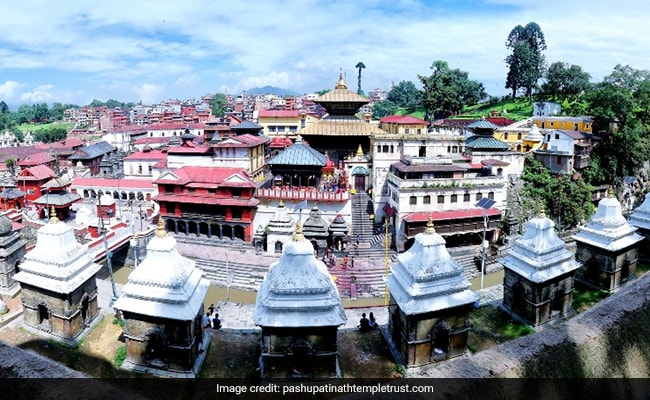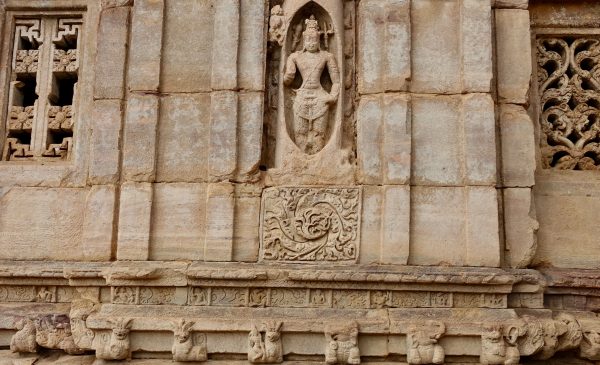
To coincide with the Mahaśivarātrī, a great Hindu festival, ApEx brings to you a noted European scholar on Sanskrit and Śaivism—the study and practice related to Śiva. Florinda De Simini is an associate professor in Ancient and Medieval History of India at the University of Naples “L’Orientale”. A PhD in Indic and Tibetan Studies from the University of Turin, she is busy exploring Śaivism in India and Nepal these days through her Śivadharma Project, making a noble use of the National Archives of Kathmandu, and contributing to the study of the religious-social landscape of the Kathmandu Valley, tracing it right up to medieval times.
Excerpts:
What exactly does the Śivadharma Project do?
At the Śivadharma Project, our research focuses on lay Śaivism as seen from the perspective of the texts belonging to the Śivadharma tradition, which we trace in their attestations through the textual, epigraphic and visual sources of South Asia. Financed by the European Research Council, the project is based at the University of Naples “L’Orientale” in Italy as the host institution. University of Bologna and the École française d’Extrême-Orient in Pondicherry are our partners. Scholars from Italy, Nepal, India, the United Kingdom, Hungary, the Netherlands, and Israel, hired at these three institutions, contribute to the project with their expertise in different fields of Indology.
Your project mainly focuses on pre-modern sources. How could it be relevant for the modern age?
In the first place, the team of scholars working for the Śivadharma Project is contributing to publishing and studying new sources, and thus writing new pages of the religious and political history of South Asia. Therefore, one of the reasons why the project can be considered relevant to the modern world is that we are enhancing our knowledge of the past; specifically, also of aspects of the past that still reverberate in the present. As a matter of fact, traces of the Śivadharma can be seen in the living Śaiva traditions of India and Nepal: I think, just to mention a few examples, of the Lingayat in Karnataka, or the Śaiva Siddhanta in Tamil Nadu.
In Nepal, the famous Yogi Naraharinath, working from Pashupatinath, about 20 years ago transcribed and commented upon the Śivadharma Sanskrit texts, producing the only complete edition of the works belonging to the Nepalese “Śivadharma Corpus” that is known so far.
Our study of primary sources, such as manuscripts, inscriptions or iconography, will furthermore contribute not only to the knowledge, but also to the preservation of this precious but fragile heritage, as we are carrying out the digitization and online storing of these materials. All the results of our project will be available online at no cost on our website, to the benefit of the academic and general readership.
What are your project’s crucial findings so far?
In the first place, we are discovering that the influence and reception of our Sanskrit sources, composed as early as the 6th-7th century, was more pervasive than we originally thought. The Tamil-speaking South, with its production in Tamil and Sanskrit, has surpassed our expectations concerning the number and complexity of the new materials that have emerged on our specific research subject. Moreover, in several cultural areas, such as Nepal or North-Eastern India, our research is constantly showing that, at some levels, the boundaries between religious traditions were in fact quite blurred: Śaiva communities existed in a continuum with Buddhists and Vaiṣṇavas, and this has echoes both in their doctrinal and in their institutional lives.
How would the study of Śivadharma benefit the European academic sphere?
Primarily by employing scholars at European institutions, such as the University of Naples and the University of Bologna, and thus enhancing the possibilities of conducting research in the field of classical Indology and Tamil studies. At the same time, we are also attracting and supporting students and younger scholars, to whom we specifically address some of the seminars that we host during the academic year. The organization of conferences, workshops and other academic events, which has now temporarily come to a standstill due to the current sanitary emergency, are all opportunities to promote academic and intellectual exchange, which benefit not just the scholars involved, but also the wider communities of scholars and students hosted at our institutions. In Europe, our project cooperates with colleagues mainly based in the Netherlands, Germany, the United Kingdom, Hungary and France, striving to reinforce a long-lasting network of cooperation.

How could it possibly impact Nepal and its religious and cultural studies?
Nepal is one of the main regional areas on which the work of the Śivadharma Project is focusing. As a matter of fact, this country is a treasure-trove of materials, considering the abundance of early palm-leaf and paper manuscripts of the Śivadharma texts originating from the Valley. These texts have been of special interest in the Nepalese religious landscape for centuries, as they were copied for religious purposes and chanted during festivals. The work of the project in assessing the impact of the Śivadharma on local Śaivism will therefore shed light on a relevant aspect of the rich religious history of Nepal.
We would also like to establish agreements such as MOUs with Nepalese academic institutions, in order to promote the exchange of students and scholars between Europe and Nepal, and foster collaborations between the Śivadharma Project and the Nepalese scholarly community. Nepali scholars are already in our team.
Does it tell anything new about the religious practices of the Kathmandu Valley? Are they different from those in India?
One of the specificities of Nepal that we are encountering in our research is that here, and only here, the early Śaiva works we study have been transmitted by a great number of early and modern manuscripts as part of a fixed corpus of works. Now, when we started examining these additional works, which might have been composed in Nepal, or at least were extremely popular in its manuscript traditions, we noticed that in the majority of cases they are far from being solely Śaiva in a strict sense: they rather seem to point at a hybrid form of cult in which the Śaiva devotion was embedded with Dharmashastra, Vaishnavism, and, at times, Buddhism. We believe that this aspect, when further examined and put in conversation with other elements of Nepalese religious landscape, will be counted as one of the main specificities emerging from our research on the Nepalese corpora.
This allows us to draw a direct parallel with the current cultic practice of the Kathmandu valley. As we know for experience, the Paśupatinātha temple does not only host the worship of Śiva and Śaiva deities, but also that of Vaiṣṇava deities such as Viṣṇu and Kṛṣṇa, while once a year Śiva is worshipped in the form Buddha (more specifically in the five buddhas: pañca-buddha) at every buddha-purṇiṃā (full moon day on which Buddha was born) falling in the month of Vaiśākha (May). A comparable case is the worship of Viṣṇu in Budhānīlakaṇṭha temple, where the cult of Viṣṇu starts with the consecration (abhiṣeka) on the head of a Viṣṇu statue, which presupposes that Viṣṇu is a form of Śiva. The same statue is considered to represent Avalokiteśvara by Buddhists, and it is frequently visited by Buddhist devotees.
Thus, the Śivadharma “corpus” that we are studying attests to a similar level of religious tolerance as the one that we still see in practice in Kathmandu.

You have been working closely with the material from the National Archives, Kathmandu. What value do you ascribe to those materials as an expert in this field?
The manuscript materials of the National Archives are, simply put, invaluable. In terms of antiquity and abundance, these manuscripts have been crucial to understand the relevance of the Śivadharma texts and their impact on early societies. The Archives preserve the earliest specimens of this collection, and some of the most reliable sources that we in the Śivadharma Project are using for critically editing our Sanskrit texts. At the same time, these manuscripts are more than just tools for the reconstruction of texts: for the study of their material aspects, as well as of the information added by copyists about their production and use, can also provide important clues on medieval and modern history. This does not only apply to manuscripts of the Śivadharma Corpus, but to many specimens of the various works that are preserved at the National Archives.
These are truly unparalleled materials, such as an early manuscript of the Vaiṣṇavadharmaśāstra, the oldest surviving text belonging to the Mahābhārata. Moreover, among the Archives’ precious collection we encounter the only manuscript of the Niśvāsatattvasaṃhitā, the earliest surviving Śaiva Tantra; the earliest extant Vaiṣṇava Pāñcarātra source, i.e. the Jayākhyasaṃhitā; the oldest surviving Jaina Tantra, the Praśnavyākaraṇa, and so on. Such materials provide an enormous contribution to the study of the early history of Hinduism, Buddhism, and Jainism — which makes The National Archives of Kathmandu an irreplaceable resource in the field of Indology.
Why did you choose to study Sanskrit instead of venturing into other profitable areas?
Well, if you consider the grants that I received, and not my personal income, studying Sanskrit has proven to be a very profitable choice in the end! All jokes aside, I have always been attracted to the humanities and the arts, and wanted to dedicate my life to studying them well before my encounter with Sanskrit. When I started engaging with this field of study, I saw that it could give enormous possibilities for original research and new discoveries. But my choice was not solely dictated by my personal inclination: I do believe that studying and teaching these subjects has a long-lasting impact on society, even though the results can only be assessed over a long period of time.
You have spent so many years studying Śaivism. What attracted you? Why Śiva?
One of the reasons why I chose Śaivism is that it is one of the main religious, cultural and political agents in the period that I was mainly interested in studying, which spans from the post-Gupta era to the 13th century. The spread of Śaivism had a profound influence on the literary, philosophical and artistic production of the era, while also impacting the political and institutional spheres. In brief, the history of Śaivism makes for a multifaceted topic that can arise the interests of many. Another reason was the encounter with the work of several other scholars who were already active in this field. I was thus also attracted by the idea of becoming part of a lively academic community, and contributing with my work to its intellectual endeavors.
